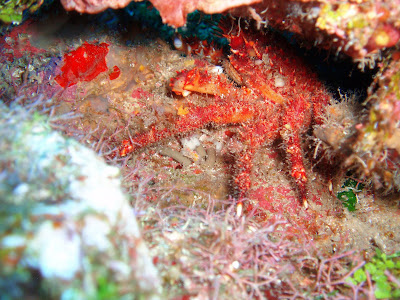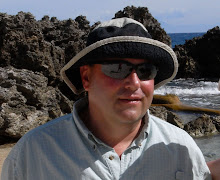

Matt sends us a favorite sunset and Kathy captures a wonderful shot of a Large Eye Toadfish!
Tropical Marine Ecology--An 8-day workshop at a tropical reef in Roatan, The Bay Islands, Honduras, Central America. Join New York Sea Grant, The Center for Ocean Science Education Excellence - Great Lakes (COSEE-GL) and the AQUARIUM of Niagara on their eighteenth annual expedition to the Caribbean.
 Three dives in one day! Starting at Mary's Place, we swam through overhanging rocks and deep valleys. An ocean triggerfish was sighted feeding.
Three dives in one day! Starting at Mary's Place, we swam through overhanging rocks and deep valleys. An ocean triggerfish was sighted feeding.








 What could be better than starting your day with a dolphin kiss? The group got to enjoy a dolphin encounter, including touching and "holding" a dolphin. After our one-on-one encounter, we all got to swim in the dolphin lagoon and frolicked with dolphins as they investigated turtle grass and empty shells that we used to entice them in for a closer look. We even got to see the 2-day old calf with its mother. A true once-in-a-lifetime experience.
What could be better than starting your day with a dolphin kiss? The group got to enjoy a dolphin encounter, including touching and "holding" a dolphin. After our one-on-one encounter, we all got to swim in the dolphin lagoon and frolicked with dolphins as they investigated turtle grass and empty shells that we used to entice them in for a closer look. We even got to see the 2-day old calf with its mother. A true once-in-a-lifetime experience.
























